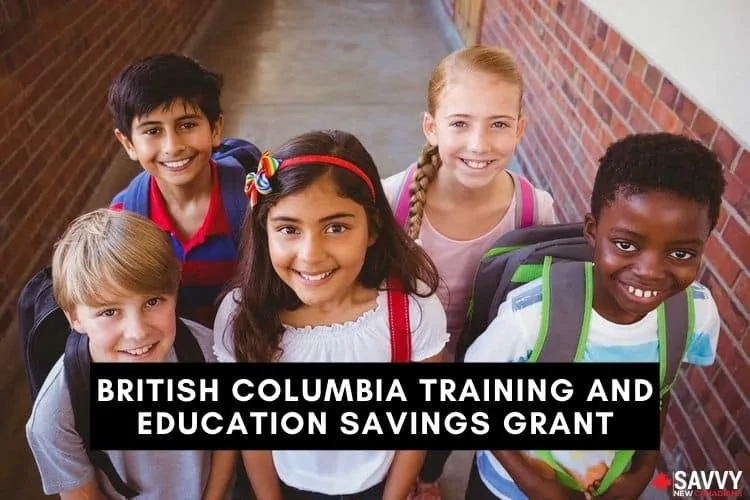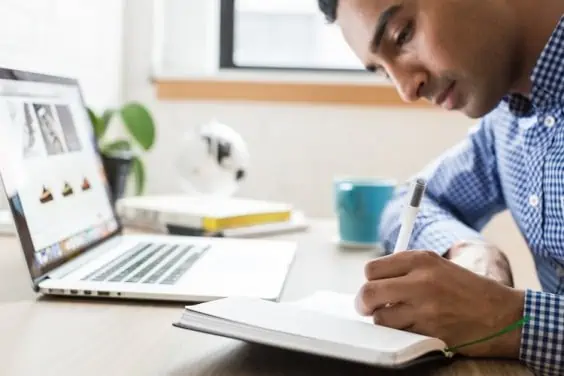Residents of British Columbia who have children aged six to nine years can apply for the B.C. Training and Education Savings Grant (BCTESG).
This grant provides a one-time payment of $1,200 per child and can help you save for their future post-secondary education using a Registered Education Savings Plan (RESP).
Below, I discuss everything you must know about the BCTESG, including how to apply, whether it’s taxable, and the other RESP grants available in Canada.
BCTESG Explained
The Government of British Columbia contributes $1,200 to the RESP of eligible children between the ages of six and nine.
Unlike the CESG, you do not need to make a matching contribution to qualify.
The eligibility requirements for the BCTESG include the following:
- The parent or guardian of the child must be a resident of British Columbia
- Proof of residency is required and may include a valid B.C. driver’s license, B.C. ID card or B.C. utility bill dated within the last 3 months and showing the current address of the parent or legal guardian
- The beneficiary (child) must be at least 6 years and can apply until the day before their ninth birthday
- The beneficiary must have an RESP account
Related: What is an RESP?

How To Apply for the BCTESG
You can apply for the BCTESG through most major banks and financial institutions referred to as RESP providers or promoters.
To start, you will need to first open an RESP account with them and then complete the BCTESG application form (Annex D). If you already have an RESP account open for your child, you don’t need to open a new one.
Ensure you apply for the grant while your kids are eligible. Kids born earlier than 2010 are no longer eligible based on the table below:
| Birth year | First day to apply | Last day to apply |
| 2006 | August 15, 2016 | August 14, 2019 |
| 2007 | August 15, 2015 | August 14, 2018 |
| 2008 | August 15, 2015 | August 14, 2018 |
| 2009 | August 15, 2015 | August 14, 2018 |
| 2010 or later | Day the child turns 6 | Last day before the child turns 9 |
Essentially, you have about a 3-year window to apply for the $1,200 grant after your child turns 6.
The BCTESG payments are made by Employment and Social Development Canada (ESDC) on behalf of the Government of British Columbia.
Is BCTESG Taxable?
The B.C. Training and Education Grant remains tax-free until your child enrolls in a qualifying post-secondary education program and withdraws from their RESP.
Typically, your child will have little to no other income as a student and will not be required to pay taxes based on their tax bracket.
Grant money withdrawals from an RESP are called Educational Assistance Payments (EAP). If your child does not pursue education after graduating from high school, you must return the BCTESG.
If you have questions about how the grant is administered, you can call 1-888-276-3624.
RESP Grants Available in Canada
There are three popular RESP grants offered by the Federal government:
- Canada Education Savings Grant (CESG)
- Additional CESG
- Canada Learning Bond (CLB)
Canada Education Savings Grant
The CESG provides up to a maximum lifetime grant of $7,200 per child. The government matches 20% of your contributions to their RESP up to a maximum of $500 per year.
The grant money is available until your child reaches the age of 17. Learn more about the CESG.
Additional CESG
Low- to moderate-income families may qualify for additional CESG payments. This payment translates into an extra 10% or 20% on the first $500 you make in RESP contribution every year.
For the 2023 tax year, your child is eligible for A-CESG if your adjusted family income is $106,717 or lower.
The combined basic and additional CESG amounts cannot exceed $7,200 per child.
Canada Learning Bond
The Canada Learning Bond provides up to a lifetime maximum of $2,000 to the RESP of an eligible child.
A $500 grant is contributed in the first year, followed by grants of $100 every year the child qualifies until they reach 15 years of age.
To qualify for the CLB, your family income must fall in the “low-income” category. Learn more about the Canada Learning Bond.
RESP Investments
With all the grant money available to save towards your child’s education, you want to ensure you are investing it the right way.
Returns earned on an RESP account grow tax-free until after your child starts to make EAP withdrawals.
You can hold various investment products in an RESP, including stocks, bonds, ETFs, mutual funds, cash savings, and Guaranteed Investment Certificates.
Options for investing the account include:
1. Robo-Advisor
These online investment managers offer access to low-cost ETFs, and they do all the work to ensure your RESP account stays balanced.
You pay a low annual management fee (0.70% or lower) compared to traditional mutual funds that cost up to 2% or more.
Wealthsimple is Canada’s largest robo-advisor service. Learn about their RESP products.
2. Discount Brokerage
If you are comfortable with buying and selling stocks and ETFs yourself, you can use a discount broker to manage your RESP portfolio.
This strategy can save you a lot of money in fees; however, you should be comfortable rebalancing your asset allocation when required.
Canada’s top online brokerage is Questrade. You can sign up here to get $50 in free trades. You can also check out this Questrade review.
3. Bank Mutual Funds
Most banks offer RESP mutual funds you can purchase at one of their local branches.
Mutual funds offered by the big banks tend to be more expensive than a do-it-yourself or robo-advisor approach.
That said, they are also hands-free, and you won’t need to bother with rebalancing your portfolio.
Related: What Happens to RESP If Not Used?




Questrade doesn’t accept BCTESG grants.
No, Questrade doesn’t, but I’ve just heard that qtrade is able to accept the bctesg. So I’m in the process now of opening a second account to get the grant and invest it with qtrade.
Great article and info. You’re doing important work! I wanted to add that if someone invests using Questrade, there are now ETFs that are all-in-one, broadly diversified and rebalance themselves for 0.25 MER. VEQT, VGRO, XGRO for example. This is a great option for someone who might be intimidated to rebalance their own portfolio.
Cheers!
Carly